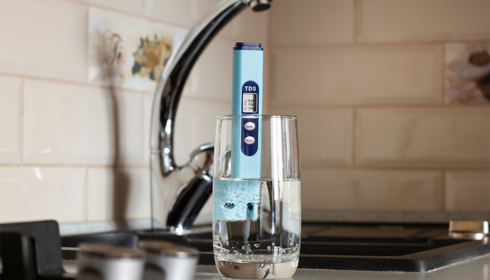You ever take a sip of tap water and think, “Eh, tastes a bit… dusty?” Or maybe you’ve noticed white spots on your dishes, a weird film on your skin, or that your electric kettle has started sounding like it’s boiling gravel. These aren’t coincidences. It’s your water whispering, “Hey, maybe check what I’m carrying in here.”
Thing is, water might look crystal clear, but it’s often far from pure. Minerals, metals, chemicals—you name it, it could be riding shotgun in every glass you pour. So, if you’ve been wondering whether you need to upgrade your home’s water setup or ditch the plastic bottles for good, pull up a chair. Let’s talk water the way real people talk about, well, everything else in life.
The TDS Talk: Not Just Another Acronym
Alright, here’s where things get just a tiny bit science-y (but stick with me). TDS stands for Total Dissolved Solids. It’s essentially a measure of what’s dissolved in your water that isn’t, you know, water. Think calcium, magnesium, sodium, potassium, and sometimes less-fun stuff like heavy metals or industrial runoff.
While not all TDS is bad—some minerals are even healthy—too much can impact taste, smell, and the long-term performance of your plumbing and appliances. For folks aiming for that sweet spot between safe and tasty water, finding ways to reduce TDS without stripping water of all its beneficial properties has become a hot topic.
And no, it doesn’t always mean you need a heavy-duty machine humming in your basement. There are natural filtration options, carbon filters, and innovative setups that tone down the TDS without going full lab experiment on your water.
RO Isn’t the Only Game in Town
Reverse osmosis (RO) systems are often the go-to for water purification—and for good reason. They’re great at filtering out nearly everything, from sediment to microscopic contaminants. But they also have their downsides: lots of water waste, slower output, and sometimes, they remove minerals that are actually good for you.
More and more households are now exploring water without RO systems, especially in places where TDS levels aren’t crazy high but taste and safety still matter. These systems, like advanced carbon block filters, UV disinfection units, or ceramic filters, offer a gentler approach. They clean up the water without overdoing it—sort of like tidying up a room without chucking everything into the donation bin.
If you’re the type who doesn’t like waste and wants your water to keep some of its natural “character,” this route might be more your style.
Whole-Home = Whole-Vibe Upgrade
Okay, let’s zoom out for a second. You’re filtering the water you drink, but what about the water you live in?
Showering, washing clothes, rinsing produce—these daily rituals also depend on the quality of your water. If the only filtration point is your kitchen sink, you’re still letting untreated water roam freely through your pipes, on your skin, and into your appliances. That’s where whole house filtration steps in and says, “Don’t worry, I got this.”
It’s like upgrading your entire water experience—not just for drinking, but for bathing, cooking, and cleaning too. You’ll feel the difference in your hair. You’ll see it in your laundry. You’ll probably even notice your water heater breathing a sigh of relief. And yes, your dog’s water bowl wins too.
Not Just About Taste—It’s About Trust
Let’s face it. Clean water shouldn’t be a luxury. But these days, it feels like you have to choose between convenience and quality. Bottled water seems like an easy fix until you realize how much plastic you’re tossing. Brita filters? Handy, but limited. And city water? Depends on the city—and the pipes running to your home.
The truth is, having full control over what flows from your tap is less about being fancy and more about taking care of what matters. Your kids. Your morning coffee. Your health.
Whether it’s reducing TDS to avoid chalky buildup, ditching over-filtered RO for something more balanced, or upgrading to full-home protection, it’s all about making water work for you—not the other way around.
A Little Maintenance Goes a Long Way
Of course, like anything worth doing, there’s a bit of upkeep involved. Filters need changing. Systems need the occasional checkup. But we’re not talking car-engine levels of maintenance. Most setups are low-key. Some can even remind you when it’s time for a refresh.
And the reward? Water that doesn’t smell like a pool. Showers that actually feel like a rinse, not a rinse-plus-scrub. Coffee that tastes like coffee—not metal.
It Doesn’t Have to Break the Bank
You might be thinking, “Sure, sounds great, but what’s it gonna cost me?”
Here’s the cool part: options are more flexible (and affordable) than ever. You can start with a sink filter or a compact countertop system. You can go all in with a smart, whole-home filtration setup. Or find a happy middle ground with something like a 2-stage system that handles sediment and chlorine without going overboard.
Whatever your budget, there’s a solution. And chances are, it’ll end up saving you money down the line—on repairs, replacements, bottled water, and maybe even doctor visits.
The Wrap-Up: Clearer Water, Clearer Mind
So yeah, water is kind of a big deal. And how you treat it matters more than most people realize.
If you’re still filling up jugs at the store or second-guessing your tap water, maybe it’s time to explore something better. A way to take back control. To feel good about every drop you use.

